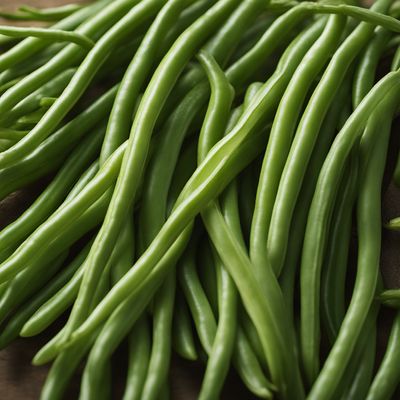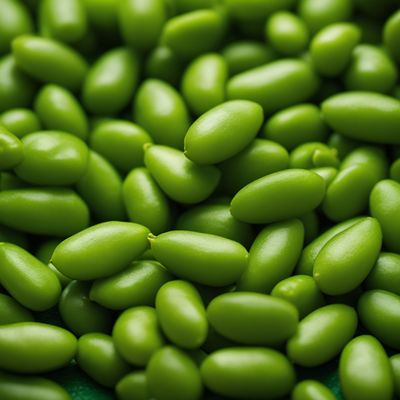
Ingredient
Black eyed peas (without pods)
The Versatile Legume: Black Eyed Peas
Black eyed peas are small, creamy-white beans with a distinctive black spot on their inner curve. They have a mild, earthy flavor and a soft, creamy texture when cooked. These legumes are a staple in Southern cuisine and are commonly used in dishes like Hoppin' John and black eyed pea salad.
Origins and history
Black eyed peas have a long history dating back to ancient times, originating in West Africa. They were brought to the Americas during the transatlantic slave trade and became an integral part of Southern cuisine. Today, they are cultivated in many countries, including the United States, Nigeria, and Brazil.
Nutritional information
Black eyed peas are a good source of protein, fiber, and folate. They are also rich in iron, potassium, and vitamin A.
How to select
When selecting black eyed peas, look for beans that are firm, uniform in size, and free from cracks or blemishes. Avoid beans that appear wrinkled or discolored. If buying dried black eyed peas, make sure they are free from moisture or insect damage.
Storage recommendations
Store dried black eyed peas in an airtight container in a cool, dry place. Cooked black eyed peas can be stored in the refrigerator for up to 4 days. For longer storage, freeze them in airtight containers or freezer bags.
How to produce
Black eyed peas can be easily grown in home gardens. Plant the seeds in well-drained soil and provide adequate sunlight and water. They thrive in warm climates and can be harvested within 70-90 days.
Preparation tips
To prepare black eyed peas, soak them overnight in water to reduce cooking time. Drain and rinse before cooking. They can be boiled, simmered, or pressure-cooked until tender. Black eyed peas are commonly used in soups, stews, salads, and side dishes. They can also be mashed and formed into patties for fritters or veggie burgers.
Substitutions
Cannellini beans, navy beans, or lima beans can be used as substitutes for black eyed peas in recipes.
Culinary uses
Black eyed peas are commonly used in Southern cuisine, such as in Hoppin' John, a traditional New Year's dish. They are also used in salads, soups, stews, and side dishes. In West Africa, black eyed peas are a key ingredient in dishes like akara and moi moi.
Availability
United States, Nigeria, Brazil, India, China
More ingredients from this category » Browse all

Monantha vetches (without pods)
The Versatile Monantha Vetches

Yardlong beans (without pods)
The Versatile Legume

Stink beans (without pods)
The Pungent Delicacy: Stink Beans Unleashed

Guar beans (without pods)
Versatile Legume Powerhouse

Ervils (without pods)
Delicate Green Gems

Tepary bean (fresh seeds)
The Resilient Legume

Vetches (without pods)
The Versatile Vetch

Lima beans (without pods)
The Versatile Lima Bean

Borlotti or other common beans (without pods)
The Versatile Legume: Borlotti Beans

Soyabeans (without pods)
The Mighty Bean: Unleashing the Power of Soyabeans

Jack beans (without pods)
The Versatile Legume: Unveiling the Wonders of Jack Beans

Mat bean (fresh seeds)
The Mighty Mat Bean: A Nutritional Powerhouse